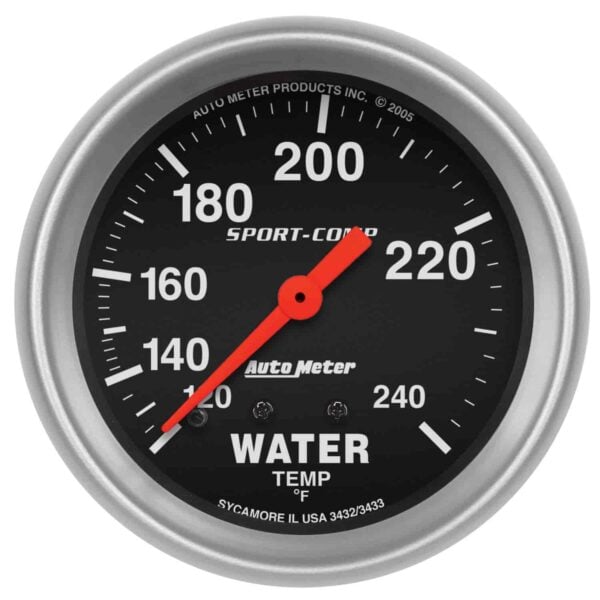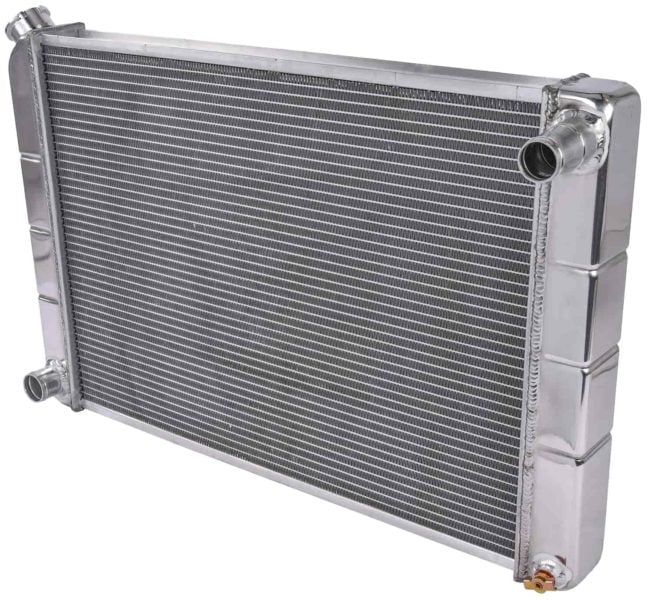Sign up now to join the JEGS email newsletter and be the first to learn about new products, special deals and e-mail only offers!


Aluminum radiators are fantastic upgrades to copper and brass radiators that are used on older vehicles. If you're suffering from a faulty radiator or you're planning to enhance your engine's power output, an aluminum radiator may be worth investing in.
What’s it all about? Here’s the lowdown on upgrading your cooling system with an aluminum radiator.
Aluminum radiators offer a wide range of benefits over more traditional copper and brass options. By upgrading to aluminum, you'll reduce the weight of your radiator while improving its lifespan, efficiency, and style.
Even though copper has a better heat transfer rate than aluminum, aluminum radiators move heat more effectively. This is because aluminum is stronger and can be used to make significantly thinner fins and pipes than copper or brass. By changing to an aluminum radiator, you'll enjoy thinner pipes and fins, and you can increase the size of the radiator to include more cores or more powerful fans without adding any weight to your system, thanks to the lightweight properties of aluminum.
Whether you're considering upgrading your engine for greater performance, or you simply want the peace of mind that comes from an overengineered cooling system, changing to an aluminum radiator allows you to cool your car's engine faster and more capably.
OEM radiators often use aluminum and plastic components together. This creates weak points in the system that are likely to crack and fail eventually. Instead of making repairs to these systems, it's often better to install an all-aluminum radiator in its place. These systems are built to last for a decade or longer, and they are designed without weak points you need to worry about. A modern aluminum radiator is a much more reliable option than an aging copper and brass radiator, and if you're dealing with regular radiator problems, you can do away with them by changing to an all-aluminum product.
Sign up now to join the JEGS email newsletter and be the first to learn about new products, special deals and e-mail only offers!

Older radiators are made from a mix of copper and brass, and they transfer heat pretty well, but they're also significantly heavier than aluminum. One of the most intense benefits of swapping to a radiator made from solid aluminum is how much weight you'll save in the process. By making a switch to aluminum, you can either lower the overall weight of your vehicle, or you can install a larger radiator and enjoy the enhanced cooling performance while maintaining the same level of weight.
By saving weight in your vehicle, you can make it faster and improve your fuel efficiency as well. Even if you don't care about saving on weight, it's nice to have the option to upsize your radiator without slowing your vehicle down. That's something you can do using aluminum.
Aging radiators become corroded and often lead to enhanced contamination within your car's cooling system. If your aging radiator is corroding on the inside where coolant flows, you're likely to develop unhealthy sludge in your cooling system with time. Sometimes flushing the system is enough to remove this sludge contamination, but a corroded radiator will create new sludge that impacts the performance of your cooling system in the future. In instances where your radiator is old and heavily corroded, it's best to upgrade to a new aluminum model that won't contaminate your cooling system.
The last benefit of aluminum radiators that should not be ignored is the style factor that these components offer to your vehicle. Flat-top aluminum radiators have a high-quality minimalistic look that helps to clean up your engine compartment and give it a more modern appearance. If you want to enjoy a more aesthetic-looking cooling system, upgrading to an aluminum radiator is a simple change you can make.
Before choosing one of the aftermarket aluminum radiators available, it's important to understand the different radiator types and which is best for your needs specifically. Aluminum radiators are divided up into single and multi-pass units and crossflow and downflow units.
A radiator is either a single-pass or a multi-pass product depending on how many times the coolant tubes pass across the radiator core while traveling from the inlet tube to the outlet. Single pass radiators move coolant through the core a single time before it reaches the outlet and travels back to the engine again.
Double-pass or triple-pass radiators are divided into multiple horizontal sections where the coolant pipes snake across the radiator, down slightly, and back in the other direction again before finally reaching the outlet pipe. Multi-pass radiators keep coolant exposed to the radiator cores for longer and increase the cooling capacity of a radiator between 5 to 10% for a double-pass and 10 to 20% for a triple-pass system.
It's important to note that multi-pass radiators are more costly to purchase, and they require more costly accessory upgrades. These systems must be crossflow systems which means they generally have a short and wide design that won't work with all vehicle types, and they require more powerful water pumps to drive the coolant through properly.
If your vehicle has a heavily modified engine that produces significantly more heat, investing in a dual-pass or triple-pass radiator may be worth the added expense.
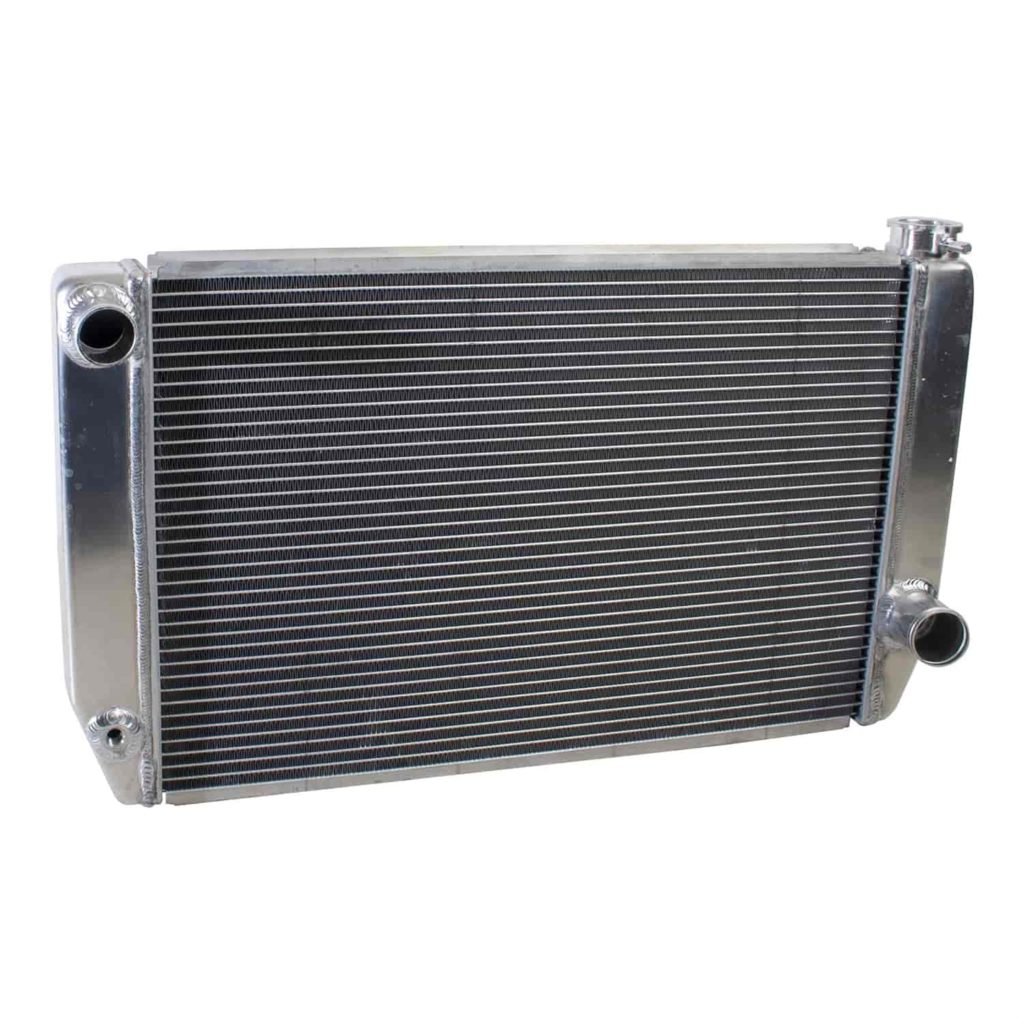
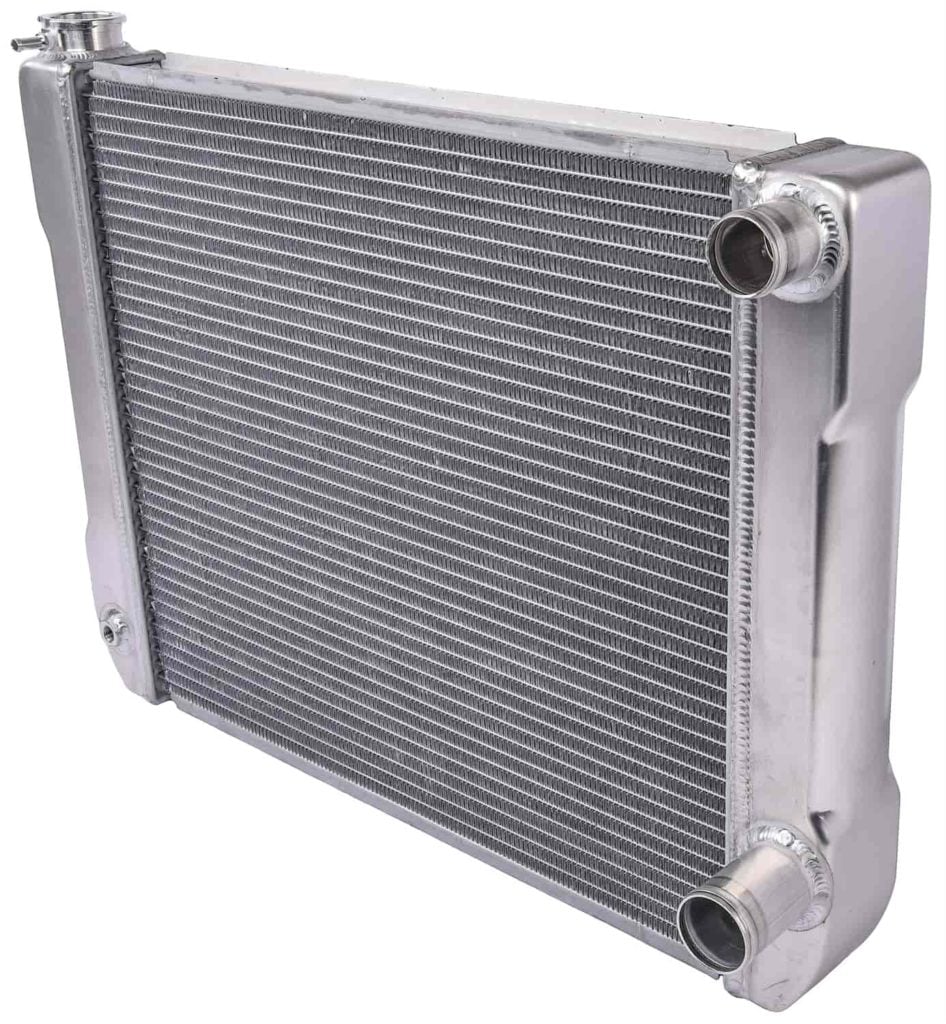
Most radiators are either downflow or crossflow. Downflow radiators have an inlet pipe at the top, and the coolant flows down through tubes until reaching the outlet at the bottom. Downflow radiators tend to be tall and narrow in shape.
Crossflow radiators have an inlet on one side and an outlet on the other. The coolant tubes travel horizontally between the inlet and outlet pipes, and they are generally short and wide in dimension.
Crossflow radiators are more commonly found on modern vehicles, and they are known to be more efficient and effective. Crossflow radiators can have a larger core area, they move coolant over the cores more slowly, allowing more time for cooling, and they can be divided into multi-pass configurations for even more cooling gains.
As long as your vehicle is set up with the space for a crossflow cooling system, it's best to invest in this technology rather than getting a downflow radiator if you can.

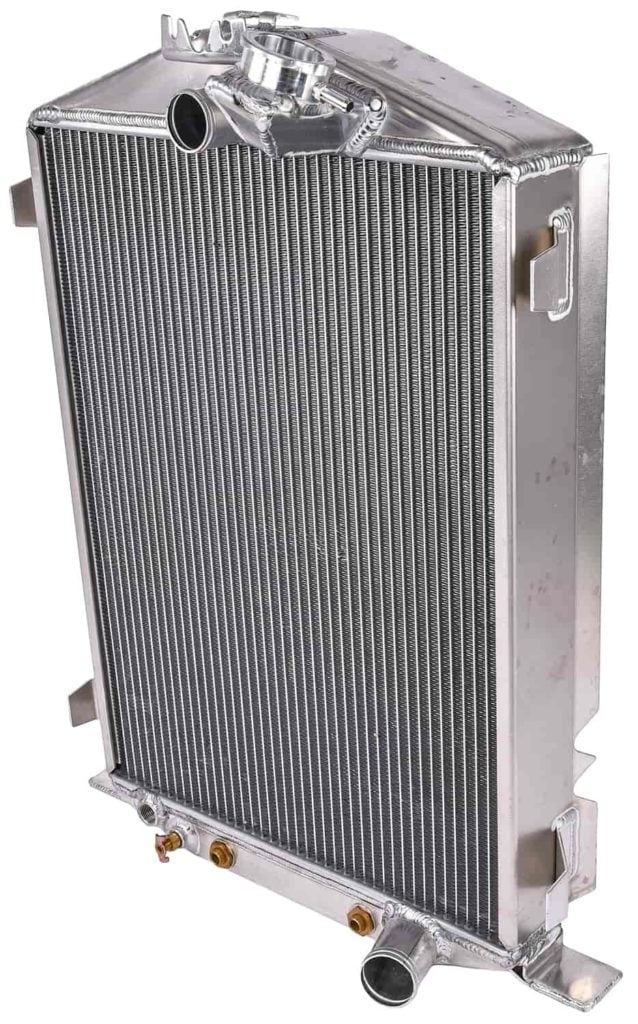
Many people ask, "Is it worth upgrading radiators?" and the cost of getting an aluminum radiator can help you decide the answer to that question. A simple aluminum radiator can cost as little as $200 for your vehicle, but when seeking a high-quality multi-pass system along with the upgraded water pump that you'll need, you should expect to spend closer to $1,000 for the best equipment. You'll also have to consider the labor to have these parts installed if you aren't going to do the work yourself. Different aluminum radiators are sold at different price points, and you'll have to determine what is compatible with your vehicle based on the size, configuration, and output of the product.
When considering whether you should upgrade to an aluminum radiator or not, consider the question "how long should a radiator last?" along with the age of your current radiator and your overall cooling needs. Radiators typically last between eight and ten years before they need to be replaced. If you have a failing radiator, it may be more cost-effective to replace it with a new aluminum model rather than replacing it. If you're upgrading your engine, you'll likely want a more capable radiator to keep things cool as well. Consider all these factors, as well as the cost of the upgrade, before you decide if it's worth the investment.
For simple online or mail-order access to high-performance vehicle components, JEGS is a valuable resource. Auto enthusiasts can use JEGS for access to wheels, engine parts, fuel or cooling system components, and more.


